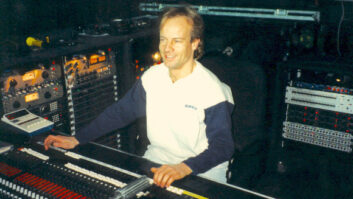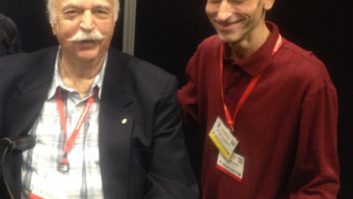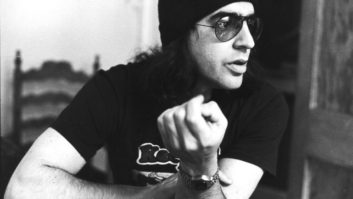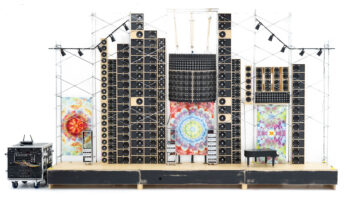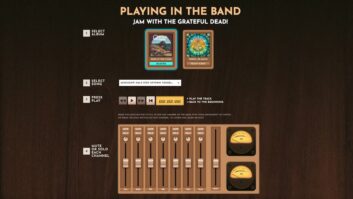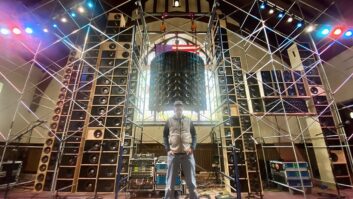
New York, NY (November 17, 2020)—A giant among recording engineers, Bruce Swedien died peacefully November 16 at the age of 86. Over the course of a 65-year career in engineering and production, Swedien was nominated for 13 Grammy Awards and received five, including for his work with Michael Jackson and Quincy Jones on 1982’s Thriller, the top-selling album of all-time with an estimated 66 million copies sold.
Jackson and Jones were far from the only major names that Swedien recorded, however. That list, reading like a Who’s Who of 20th Century popular music, includes—to name only a few—Nat King Cole, Natalie Cole, Paul McCartney, Curtis Mayfield, Sergio Mendes, Diana Ross, Barbra Streisand, George Benson, Dinah Washington, Tommy Dorsey, Herb Alpert, Roberta Flack, Rufus & Chaka Kahn, LL Kool J, the Smothers Brothers, Andrew Previn, James Ingram, Eydie Gorme, Joe Williams, Jennifer Lopez, Mick Jagger, B.B. King, John Lee Hooker, Herbie Hancock, Lionel Hampton, Lena Horne, Missing Persons, Jimmy Reed, Patti Austin, Sarah Vaughn, Donna Summer, David Hasselhoff and many others.

Swedien’s recording philosophy was simple, as he told Pro Sound News in 2014: “The top thing is: Music first. Everybody thinks that you listen, that you learn how to make records by listening to records, but you don’t. You have to go out and hear live music in a good acoustic situation, and from there, you build a benchmark for your ear…. You can’t learn how to make records by listening to other people’s records, because then you’ll never be able to express yourself. You’ll always have that other thing; it will be too much of an influence.”
While Swedien had his own influences and mentors in the studio, he found his own way over the course of a considerable career. Born in Minneapolis, MN on April 19, 1934, Swedien began working in local basement studios while still in high school, and married his life-long companion, Beatrice Anderson, not long after graduation. Although he started his own recording studio at age 19 by converting a former movie theater into a facility, he moved with his wife and three kids in 1957 to Chicago to work at RCA Victor recording studios, before joining Bill Putnam’s legendary Universal Recording the following year as a staff engineer.
It was during that time that he truly came into his own as an engineer, he told PSN: “My mentor was Bill Putnam in Chicago. He was marvelous. [Soon] I was recording all the big bands at that point in time: Stan Kenton, Count Basie, Duke Ellington—yeah, everybody.” During his time there, in 1962, Swedien garnered his first Grammy nomination, for engineering Frankie Valli and the Four Seasons’ evergreen single, “Big Girls Don’t Cry.”
It was also during that time that he befriended Jones while the latter was the president of Mercury Records; it was the start of a working and personal friendship that would last the rest of his life. After going independent in 1969, Swedien found himself usually engineering in New York or Los Angeles, and eventually moved to L.A. in 1975. When Jones took on the role of music supervisor for the 1978 movie adaptation of the Broadway musical The Wiz, he recruited Swedien to record the soundtrack with him, marking the first time the pair worked with Michael Jackson, who starred in the film. While the picture flopped, the three soon reunited to record Jackson’s 1979 hit album, Off The Wall, which had four top-10 hits and ultimately sold over 20 million copies. They would go on to create 1982’s Thriller, 1987’s Bad and 1992’s Dangerous, and Swedien won engineering Grammys for all three albums. He additionally nabbed Grammys for his work on two of Jones’ own projects—1990’s Back on the Block and 1996’s Q’s Jook Joint.
Swedien moved to New York in 1994, and then later to Florida. In the 2000s, he wrote three books that extensively detailed his working methods and philosophy behind recording—2004’s Make Mine Music; 2009’s In the Studio with Michael Jackson; and 2013’s The Bruce Swedien Recording Method—and also began teaching master classes around the world with his “In the Studio with Bruce Swedien” workshops. During his career, he was additionally awarded 10 Grammy certificates and two ASCAP Composer Awards, and was also nominated for five TEC Awards. His passing on November 16, 2020 was announced on Facebook by his daughter Roberta, who paid tribute to her father as having had “A long life full of love, great music, big boats and a beautiful marriage. We will celebrate that life. He was loved by everyone.”
